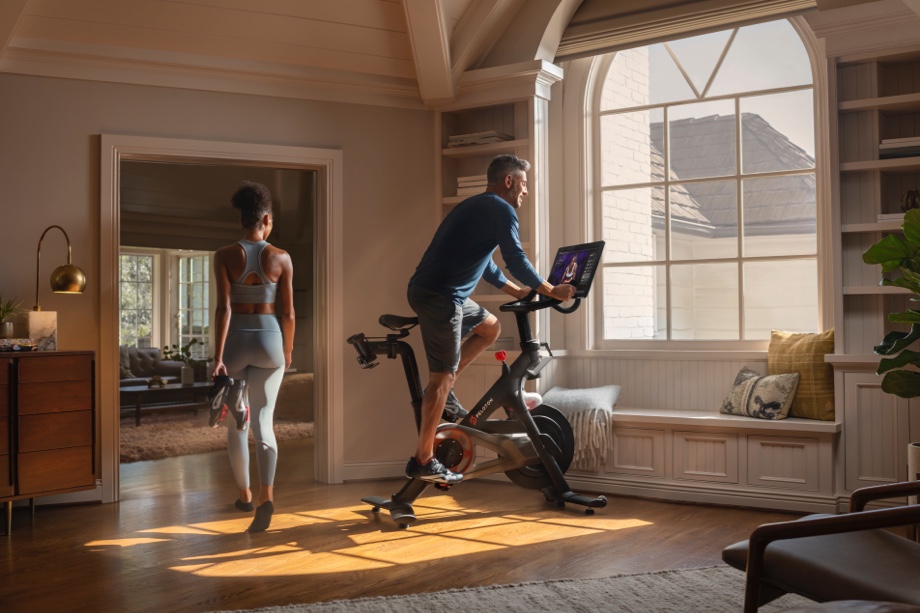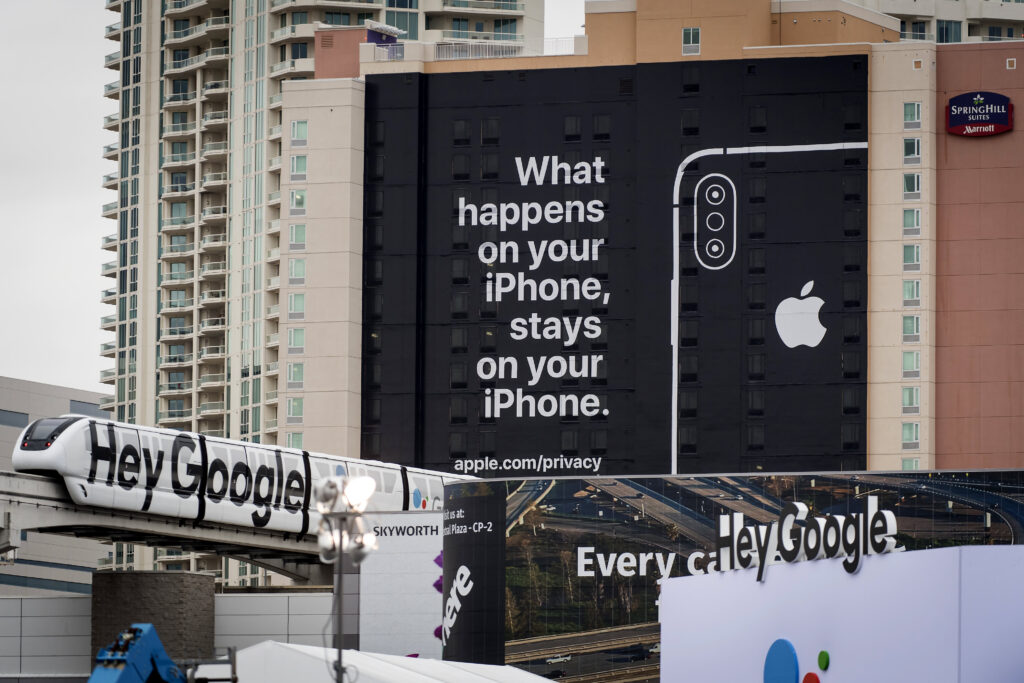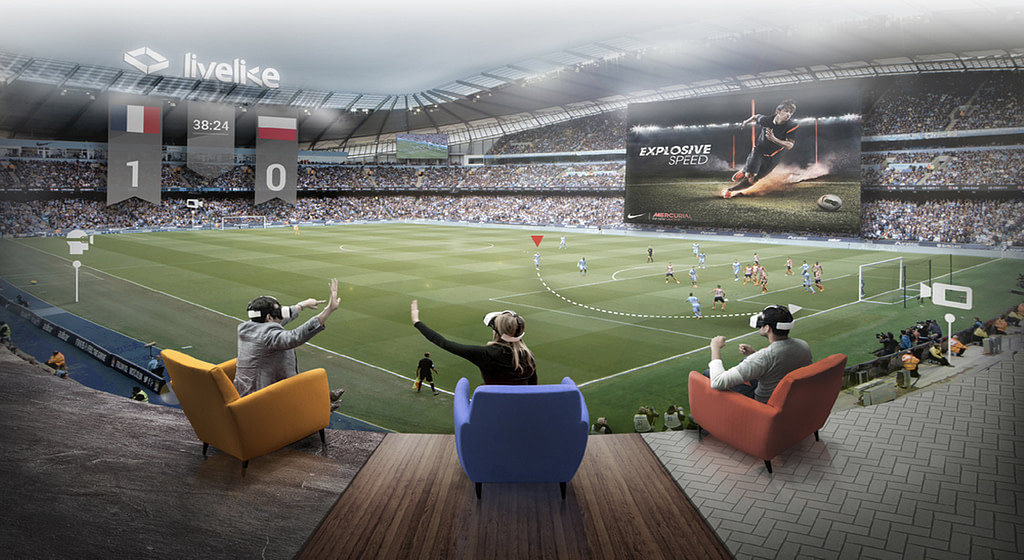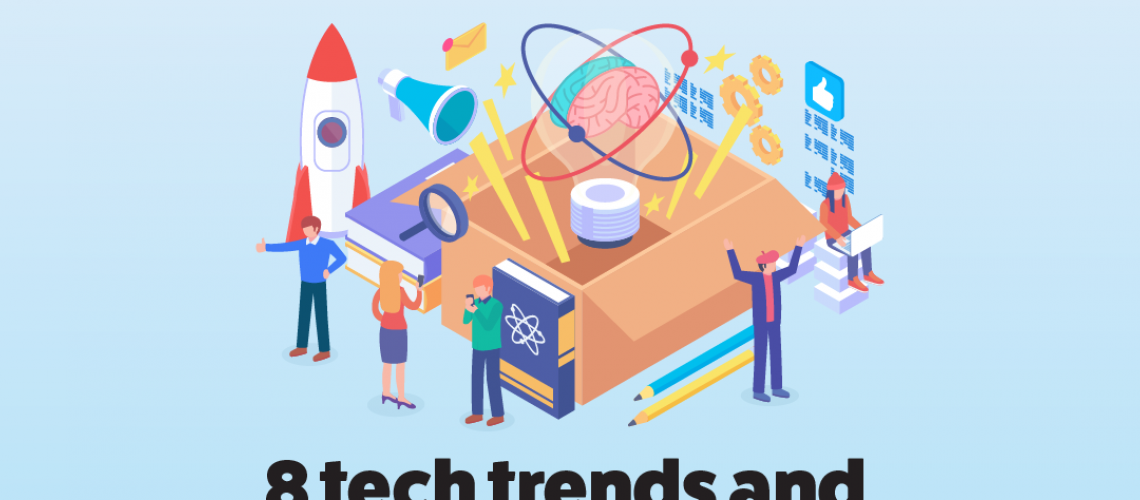Will 2021 be a year to remember for the right reasons?
The start of any new year brings with it much hope and optimism. Many of us will be hoping that 2021 yields an “annus mirabilis” and not the preceding “annus horribilis”.
Widespread Covid-19 vaccine roll out, a Brexit trade deal between the EU & UK (whilst not perfect) and a new US president are amongst a handful of events that will bookmark world affairs in the 52 weeks ahead of us..
But what about the world of tech?
2020 has without doubt seen a rapid acceleration of “digital adoption” in all our lives. We may have eventually got to where we are now over the mid-long term. But the global pandemic has certainly forced many of us to change our behaviours in 2020. Even my 85 year old grandmother now interacts daily with devices like Alexa and uses video calling as often as she would have used an old school telephone back in the day. Remember those?
So what can we expect in 2021.
Barring major global catastrophes, here are some of my predictions for some of the big tech trends and news stories we may are likely to see over the course of this year.
TL;DR
- The rise of Fitness-as-a-service
- Final Mile delivery technology needs an upgrade
- eCommerce comes of age
- Climate tech will become mainstream
- Apple’s big bet on privacy will dominate the FAANGs
- Rapid adoption and opportunities for 5G
- The Quantum Computing Arms Race
- A thawing of the Cyber War
The rise of Fitness-as-a-service
The health and fitness sector has been one of a handful of outliers during the pandemic. On one hand, health and fitness clubs have had to close, rendering their business model virtually extinct overnight. On the other, popularity in fitness apps has never been higher as many people began working out online and some personal trainers have experienced influencer like growth.
The World Economic Forum reported downloads of fitness apps like Calm, MyFitness Pal and Strava increased by almost 50% in the first half of 2020. Companies like Zwift and Peloton have also achieved astronomical growth in 2020 with Pelotons FY valuation up 470%. And not to be left out of the party, Apple recently launched it’s own on-demand fitness offering with on-demand studio classes available as a subscription. Yet the “Bricks and Mortar” fitness industry has long been seen as something of a final frontier for the digital age.

The future of the fitness industry could well end up being unrecognisable post-pandemic. Some experts though are predicting a “huge rebound” when gyms open up. Others suggest that “membership levels” may be as low as 50% of post pandemic levels and memberships slashed.
But “users” are now predisposed to access classes on-demand and the likes of Peloton, Zwift and Apple Fitness have gamification built in, keeping users coming back for more. It’s likely the health and fitness industry will need to offer more than heavily discounted memberships to lure users back in their droves.
As we transition out of lockdown, bricks and mortar sites will need to augment the new breed of fitness subscriptions, on-demand classes and gamification with their in-person services. Better integration with smart watches, more connected devices in physical gyms and more frictionless value added services through apps will likely be used to entice users back to the offline offering.
Final Mile delivery technology needs an upgrade
The final-mile delivery industry has proven itself to be somewhat pandemic proof with unprecedented delivery volumes as more of us shop online. Small and large retailers alike have had to focus more on their online offering and ultimately rely on 3rd party delivery companies to fulfil the “final mile”. That is except for Amazon, on track to be the biggest delivery company in the world in 2021.
The online behemoth’s “Prime” service has boomed in the past 12 months. Many of us now take advantage of Amazon’s almost universal next day delivery throughout the UK. The size and scale of their operation is almost unfathomable. In little under a decade, Amazon have gone from relying on multiple carriers for the final mile, to now owning the whole end to end process.

A parcel delivery service is a massively costly operation that should command a premium price. Yet in order to compete with Amazon retailers demand and require the cheapest rate per parcel whilst wanting the fastest and most reliable service. And therein lies the problem. If traditional retailers and the new online only retailers are to compete, they will need to collaborate with the legacy delivery carriers. This will hopefully bring new innovations to market that make delivery faster, frictionless, convenient and more reliable. All while remaining cost effective for everyone along the supply chain, including the consumer.
In 2021, expect to see new innovations that go beyond predicted time slots, an innovation almost 10 years old now. New entrants like UBER or even Deliveroo could well end up collaborating with local retailers whilst integration with smart doorbells could provide further options for parcel carriers. However, Amazon’s acquisition of RING in 2018 should prove as a warning that the online giant continues to innovate and delivery providers and retailers will be playing catchup for sometime to come.
eCommerce comes of age
2020 will be remembered as the year we lost some of the biggest names in retail. Whilst the reason will be levelled at the door of the pandemic, high street retail was already struggling to adapt. The global pandemic simply accelerated the inevitable growth in online shopping by 10 years. But retail plays an important role in our town and city centres and how it recovers will be critical to the economic recovery.
If much loved high street retailers are to survive over the longer term, they will need to innovate and adapt to the new digital world we are all in, and fast! The biggest challenge for high street retailers though will be their real estate footprint, a huge asset on the balance sheets but a burden on the P&L statement.
Offline, analysts expect the retail experience to become more blended with the online experience. Marketers will continue to improve their retargeting efforts and will see click and collect services as another data point on buyer personas. High street stores may well shift to become showroom like experiences with a premium placed on 1–2–1 experiences, similar to the Apple store experience. Advancements in AR could also see personalised offers served to shoppers when they are nearby as a way to entice shoppers across the threshold.
Online, the experience post buy button, an area that has had little innovation in the last decade, will likely improve as consumers require ever faster delivery and real time updates. More automation and better technology for retailers will likely help create a faster, frictionless shopping experience. More secure checkout and better payment experiences could also be a feature of eCommerce in 2021.
Overall, eCommerce professionals will continue to improve and better interpret the data they collect via better CRM systems(Customer Relationship Management). Retailers will look to integrate every interaction, whether online or offline, into their “black box” CRM systems to provide better and more personalised experiences for buyers.
Climate tech will become mainstream
The impact our actions and lifestyle choices have on climate change and our planet has been debated for decades. But if 2020 taught us something about humanity, when faced with the alternatives, we are capable of making huge seismic changes. That same willingness and fortitude to overcome a global pandemic will only accelerate the efforts to tackle climate change.
Reversing the effects of climate change will need a huge technological effort that will impact multiple areas of our lives. The solutions are complex and will require new technologies to be created. It’s highly likely therefore that we will see a considerable increase in investment flowing into climate tech in 2021.
Three areas I believe will attract attention will be aviation, electric vehicles and data centres.
2020 saw a massive reduction in air travel, subsequently reducing CO2 emissions considerably. Many airlines took the opportunity to retire ageing and more polluting aircraft, including the much loved Boeing 747. However don’t expect to see a fully electric commercial airliner anytime soon, but that technology is maturing. We’re more likely to see a more sustainable fuel to feed powerful jet engines. In 2020 scientists from Oxford University developed technology to convert carbon dioxide into jet fuel. If this can be scaled, it could be revolutionary for climate change and make air travel one of the greenest forms of travel.


Whether you like it or not, electric vehicles are coming. In 2020, Tesla’s valuation rose more than 300% and rumours abound of Apple entering the automotive market as early as 2022. Legacy car brands are playing catch up to the new logo entrants who may be better positioned to take advantage as consumer sentiment changes. 2021 will also see more players in the battery space as technology continues to improve and therefore range becomes comparable to combustion alternatives.
Data centres may actually be the biggest dirty secret of the tech and digital world, with emissions increasing year on year. Data centres are likely to come under more focus in 2021 as we require more and more cloud storage for our digital lives and a more remote workforce. Google, Amazon and Microsoft have all experimented with various alternatives to the cavernous warehouses that house millions of servers, with Microsoft even trialing submerged data centres in the North Sea.

Apple’s big bet on privacy will dominate the FAANGs
Could 2021 could be a pivotal year in Apple’s history? Recent spats with Facebook have been rooted in the change Apple has made to privacy settings within the iPhone hardware. The update essentially requires users to opt-in to allow 3rd party app developers to use user data to monetize free apps. This has not been received well by Facebook who rely on such apps to power their Audience Network and are predicting it could shave 50% of their revenue.
So why is Apple making this change? It’s simple. Apple’s big bet is that more of us will be happy to pay a premium for privacy. Recent ads run by the company emphasise the companies focus on privacy too. And Nikkei Asia reported in December that the company plans to increase iPhone production by 30% in the first half of 2021, a sure sign that they are confident people will invest in privacy.
But Apple may not be finished with changing how marketers can access user data. If rumours are to be believed, the iPhone maker could well launch their own search engine, dropping Google as the default search engine of all iOS devices. Apple would be unlikely to serve ads to users which may upset the advertising industry even further as they are essentially locked out from the highly prized Apple customer base. But this again plays into Apple’s narrative as privacy first and they are not sharing user data with 3rd parties.

So what is the future for Apple?
Apple doesn’t need advertising dollars the same way as Google and Facebook, it’s not their model. Apple’s focus is on us continually updating our hardware, whereas Google and Facebook need to either grow their user base to serve more ads to or sell more of their own proprietary hardware, something neither company has executed well.
Apple is focusing on continually creating and updating hardware that outclasses it’s rivals and that die hard users will continue to upgrade to. The messaging around privacy is also aimed at acquiring new users into the Apple ecosystem. And when inside the Apple ecosystem, services like Apple One (the all encompassing subscription service that includes their new Fitness+ product and premium news content), will drive incremental revenue per user too.
But where will it end?
Privacy is Apple’s big sell but the price for that privacy will be expensive and it will only be available via Apple hardware and services.
Apple has already rolled out their own credit card and for people who are privacy conscious, it’s a no brainer to sign up for one as many commercial credit cards already share purchasing history to ad exchanges. Apple are also rumoured to be developing hardware such as glasses and strong rumours continue about an Apple car just around the corner. And with Apple Fitness, don’t be surprised if you see Apple bikes, treadmills and other connected machines to compete with Peloton.

And one more thing…With Apple now designing its own cellular chip, it will give them the capability to create their own cellular network, removing reliance on 3rd party carriers, further strengthening Apple’s push for a closed loop integrated platform for hardware and services.
Rapid adoption and opportunities for 5G
By the end of 2021, we will likely see more 5G coverage being rolled out. 2020 potentially halted the wide scale adoption and uptake of the new technology but as we emerge from national lockdowns, be prepared for a rapid surge in new possibilities the technology will unlock.

Much of the plaudits for 5G have included more connected devices and faster and more reliable connections, especially in crowded places such as sports stadiums. Smart Cities have also been another focus for 5G applications. Initially, many of the 5G applications will be enterprise focused with robotics, inventory tracking and automation likely use cases.
But as much of the world grapples with how to reverse the cultural shift to social distancing, it’s likely we will see 5G applications that are more consumer focused. Better remote worker experiences with low latency video calls and improved connection speeds for rural areas. 5G could even spur on growth of co-working locations in rural towns and villages, as office workers shun lengthy commutes.
High street retail and hospitality could also benefit from the technology with better in-person experiences. We could even see AR experiences being personalised with connected devices. Smart glasses may well enable this but hardware providers have yet to design a fashionable pair that the average person is happy to be seen in public with.
5G will also enable content creators to create better VR/AR or even full 360 degree experiences like live sports and music events. Live events could be made available anywhere in the world and with very little latency. This could also open up a whole new genre of advertising as marketers personalise messaging based on your location.
The Quantum Computing Arms Race
Whilst we may not see practical benefits of quantum computing this decade, the arms race is certainly gaining speed with China claiming a seat at the Quantum Computing (QC) superpower table. In December, Scientists from the University of Science and Technology of China in Hefei claimed they had developed the “most powerful quantum computer in the world”, which is claimed to be 10 billion times faster than the next fastest quantum computer developed by Google in 2019. To put that in context, the simulation produced a result in under 3 minutes, a result that would have taken 2 billion years on the world’s 3rd fastest supercomputer.
So what does this mean for us?
At its most basic understanding, QC allows for the simulation of huge data sets. Whilst the technology is still in its infancy, real world applications are likely to include faster drug development, financial modelling, better batteries (for electric vehicles), communications and cybersecurity. The possibilities for QC are endless and will likely solve problems mankind haven’t even thought of yet.
But as with most ubiquitous modern day technology, the vast majority of R&D will initially take place within military applications and that will lead us to an “arms race” between the QC superpowers, China and the US. 2021 will likely see further public acknowledgements of advancements from the likes of Google, IBM and Amazon, all of whom have ploughed billions of dollars into developing the technology. But I suspect Beijing and Washington DC will be where the big developments will play out as both nations seek QC supremacy over the longer term.

A thawing of the cyber war
The cyber wars of the past decade have brought about an unprecedented level of discord at a global level, resulting in political, economical and societal unrest in many regions around the world. The Brexit result in 2016 and subsequent election of Donald Trump later that year were probably the biggest shocks to the established order, with evidence suggesting that Russia likely played a significant role in both. Much of today’s discontent online can be traced back to that tumultuous year.
Since 2016 it feels like the “Chaos Monkeys” have been left unsupervised to run riot across the internet. But now that big political changes like Brexit have taken effect and TheRealDonaldTrump has been dethroned, are we about to enter a period of relative stability for online activity? Will we see the monkeys rounded up and a relaxation of the endless tit-for-tat state sponsored cyber attacks?

I am not too sure. If the recent Solarwinds attack is anything to go by, things are likely to intensify. The group behind the attack, which has been linked to Russia, were able to access US Corporate and Government systems and was recently identified to be behind the breach at Microsoft that exposed internal source code.
With a new US president and the UK emerging as a “sovereign” state, it’s likely both administrations will be further tested with more cyber attacks expected. Many experts are predicting that the UK could fall foul to a major breach, something that won’t play out well now that the UK is outside of the EU.
In terms of social media and the proliferation of “fake news, don’t expect this to go away anytime soon. In some respect, many people have now become desensitised to some of the messages distributed through the platforms. But 2021 will need to see elected representatives tackle widespread conspiracy theories and distribution of fake news. Short of legal action against perpetrators, lawmakers are likely to put more pressure on the platforms. But the big names in the tech world have deep pockets and will likely contest any such action.
Conclusion
2021 will hopefully be a very different year to 2020 and there are undoubtedly a lot of challenges still to overcome. But what is for sure is that technology will not stand still and we are likely to see even more innovations that will change our perception of what is capable when it comes to the fast moving world of Tech.



